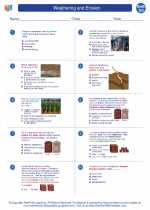Vacuoles
Vacuoles are membrane-bound organelles found in the cells of plants and some protists. They are essentially storage sacs within the cell that can hold various substances such as water, nutrients, or waste products. Vacuoles play a crucial role in maintaining the turgidity and structure of plant cells, as well as in storing and regulating the concentration of important molecules.
Structure of Vacuoles
Vacuoles are typically large, single-membrane organelles that occupy a significant portion of the plant cell's volume. They are filled with a fluid called cell sap, which contains water, enzymes, salts, and other nutrients. The membrane surrounding the vacuole, known as the tonoplast, regulates the movement of substances into and out of the vacuole.
Functions of Vacuoles
- Storage: Vacuoles store water, ions, sugars, proteins, and other essential nutrients needed by the cell.
- Turgor Pressure: By storing water, vacuoles help maintain turgor pressure in plant cells, which provides structural support and rigidity to the cell.
- Waste Management: Vacuoles can contain and isolate waste products, preventing them from interfering with cellular processes.
- Defense Mechanism: Some vacuoles contain toxic compounds that deter herbivores and protect the plant from predators.
- Regulation of pH and Ion Concentrations: Vacuoles help maintain the pH balance and regulate the concentration of ions within the cell.
Types of Vacuoles
There are several types of vacuoles, each with specific functions:
- Central Vacuole: Found in plant cells, the central vacuole is the largest and most prominent vacuole. It helps maintain cell turgor and store essential nutrients.
- Contractile Vacuole: Found in protists, contractile vacuoles are involved in expelling excess water from the cell to prevent it from bursting.
- Lysosomal Vacuole: Found in animal cells, lysosomal vacuoles contain enzymes that break down waste materials and cellular debris.
Retrieval and Digestion of Vacuoles
Vacuoles can fuse with other organelles or the cell membrane to release their contents or retrieve materials for recycling. In some cases, vacuoles may also merge with lysosomes for digestion of internal contents.
Study Guide
Here are some key points to remember when studying vacuoles:
- Describe the structure of a vacuole and its membrane.
- Explain the functions of vacuoles in plant and protist cells.
- Compare and contrast the different types of vacuoles and their roles.
- Discuss the importance of vacuoles in maintaining cell turgor pressure and storage of nutrients.
- Understand the processes of retrieval and digestion involving vacuoles.
[Vacuoles] Related Worksheets and Study Guides:
.◂Earth Science Worksheets and Study Guides High School. Weathering and Erosion

 Worksheet/Answer key
Worksheet/Answer key
 Worksheet/Answer key
Worksheet/Answer key
 Vocabulary/Answer key
Vocabulary/Answer key
 Vocabulary/Answer key
Vocabulary/Answer key
 Vocabulary/Answer key
Vocabulary/Answer key
